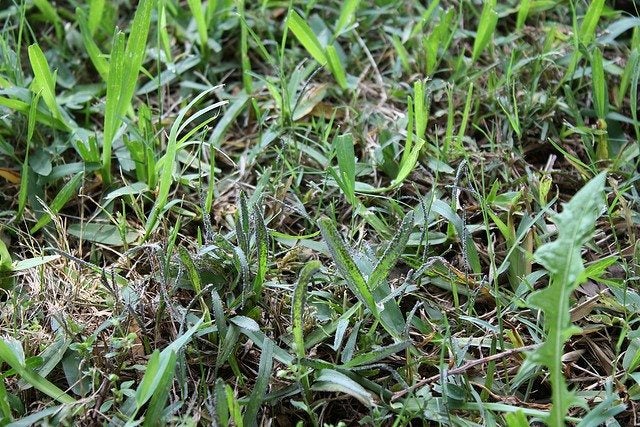Lawn Slime Mold: How To Prevent This Black Substance On Lawns


The vigilant gardener may wonder, “What is this dark stuff in my lawn?” It is slime mold, of which there are many varieties. The black substance on lawns is a primitive organism that is actually beneficial. It creeps along leaf blades eating dead organic matter, bacteria, and even other molds. Slime mold on grass is not damaging to the turf, but if appearance is a problem you can remove it. You might think this mold turfgrass disease should be killed to protect the health of your grass. However, treatments are not effective and this interesting organism might be better left undisturbed. This is something you decide after you learn a few facts about lawn slime mold.
Lawn Slime Mold
Although most often you will find a black substance on lawns in moist warm conditions, slime mold can come in many colors. The individual spores can be cream, pink, blue, orange, or red. When the spores mass together, the appearance is generally quite dark but it might also appear whitish. Slime mold spores deposit on grass when wind drives them. If moisture is present, the spores bloom and reproduce, creating patches up to 6 inches (15 cm.) across.
Lifecycle of Slime Mold on Grass
The mold spores may remain viable for many years until the proper conditions occur. Slime molds come and go as moisture recedes or if temperatures are too hot or cold. When the perfect amount of moisture comes around again, you will likely find lawn slime mold in the same areas. Heavy rains will obliterate the patch but it may also spread the spores. The best conditions for slime mold on grass to form are where there is plenty of organic material or a thick thatch, moderately moist soil, cool nights, and warm days (which promote the formation of dew), and temperatures between 50 and 80 degrees F. (10-27 C.).
Treating Slime Mold
Since it is not really a mold turfgrass disease like rust, slime mold is good for your lawn. The only drawback to the spores is the aesthetics of it on your lawn. If the sight of the colorful patches offends you, simply rake it up off the blades of grass. You can also wipe it off with a broom or just mow over the afflicted blades. The gunk may come back if ideal conditions still exist, but it is easy to remove—although repetitious. Treating slime mold with a fungicide is not recommended and there are no available chemicals recommended for control of the spores. It is best to be adaptable and just live with the stuff. The spores will clear up many of the bacteria, bad fungal spores, and excessive organic matter on your lawn, leading to a greener, healthier turf.
Sign up for the Gardening Know How newsletter today and receive a free copy of our e-book "How to Grow Delicious Tomatoes".

Bonnie Grant is a professional landscaper with a Certification in Urban Gardening. She has been gardening and writing for 15 years. A former professional chef, she has a passion for edible landscaping.